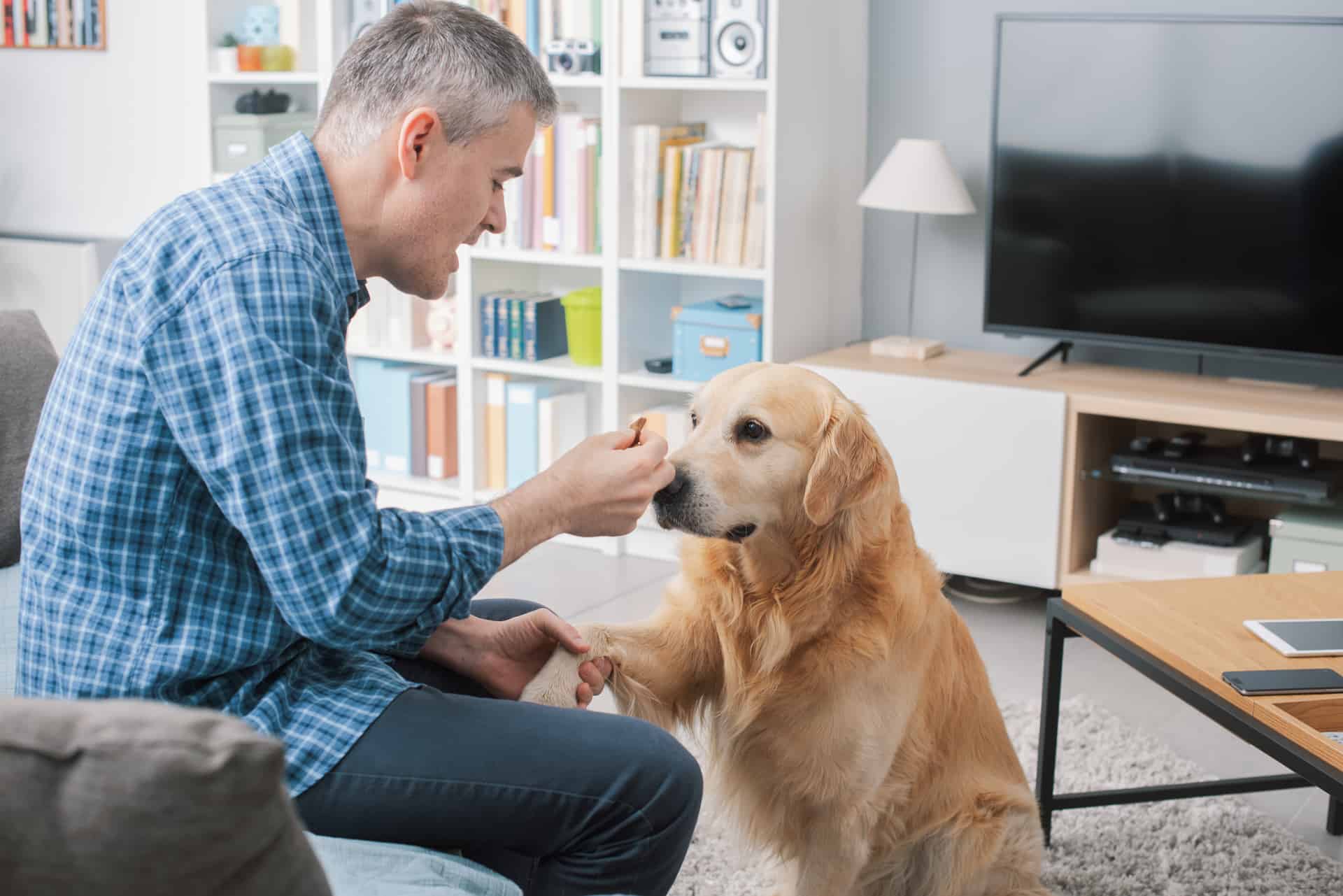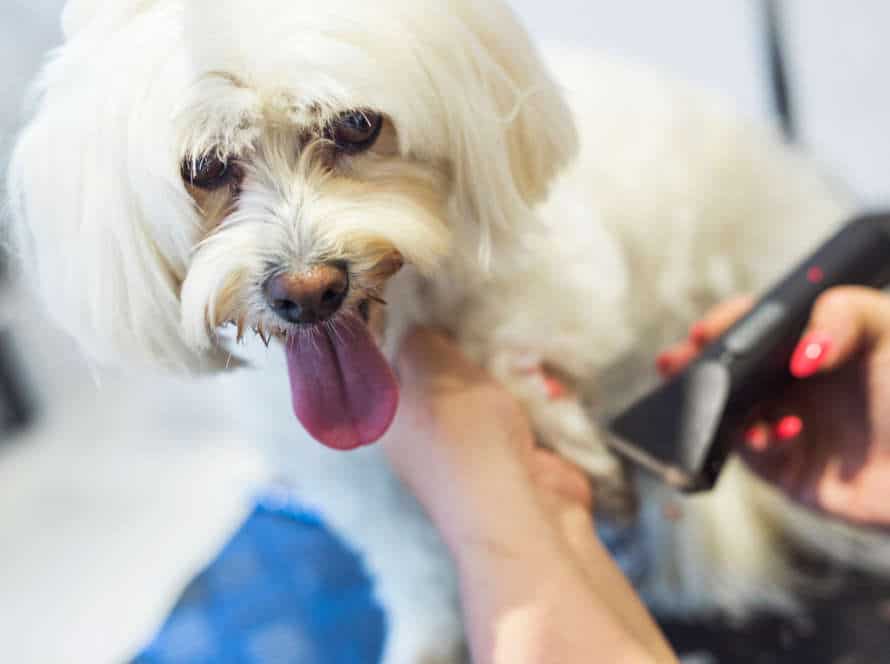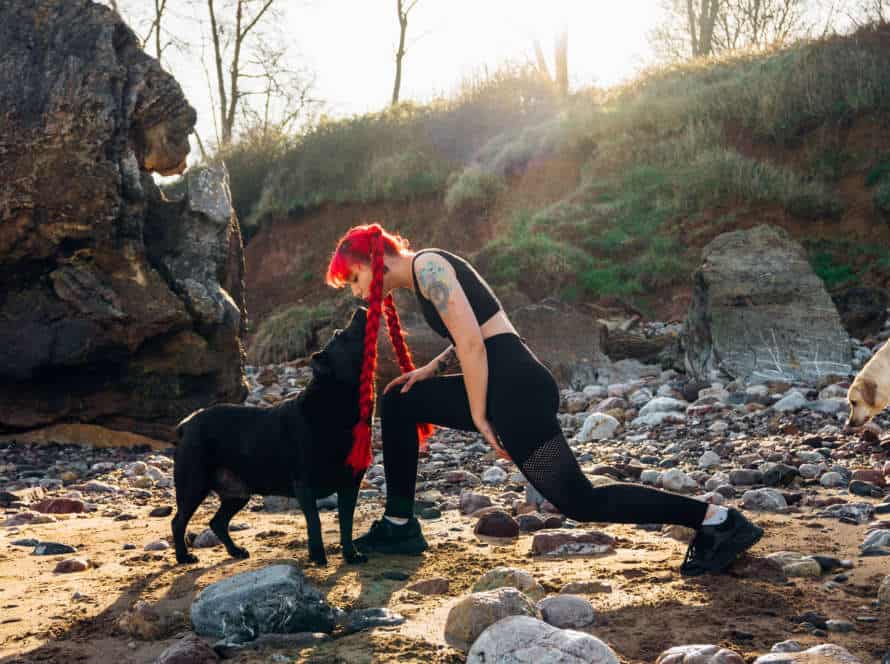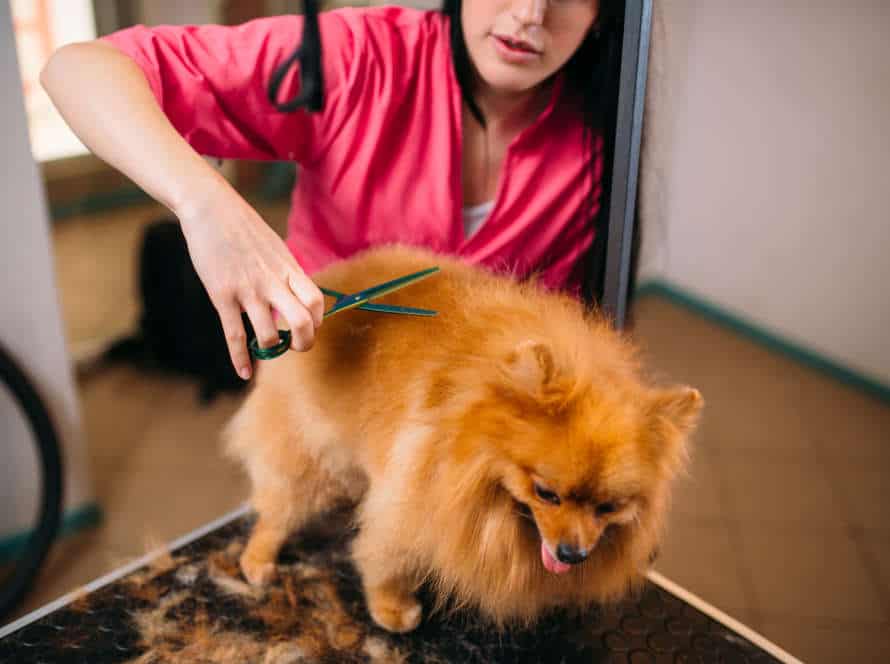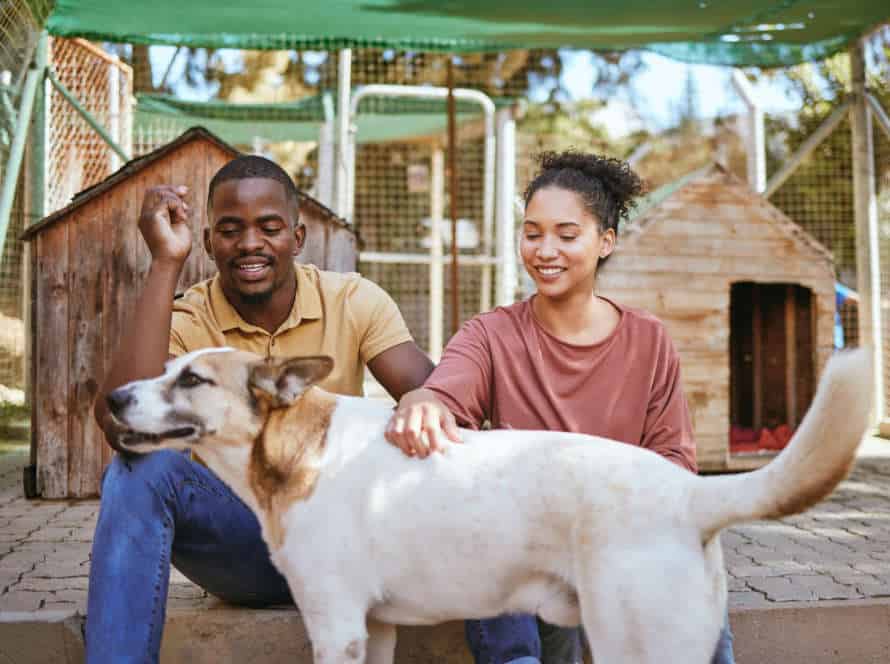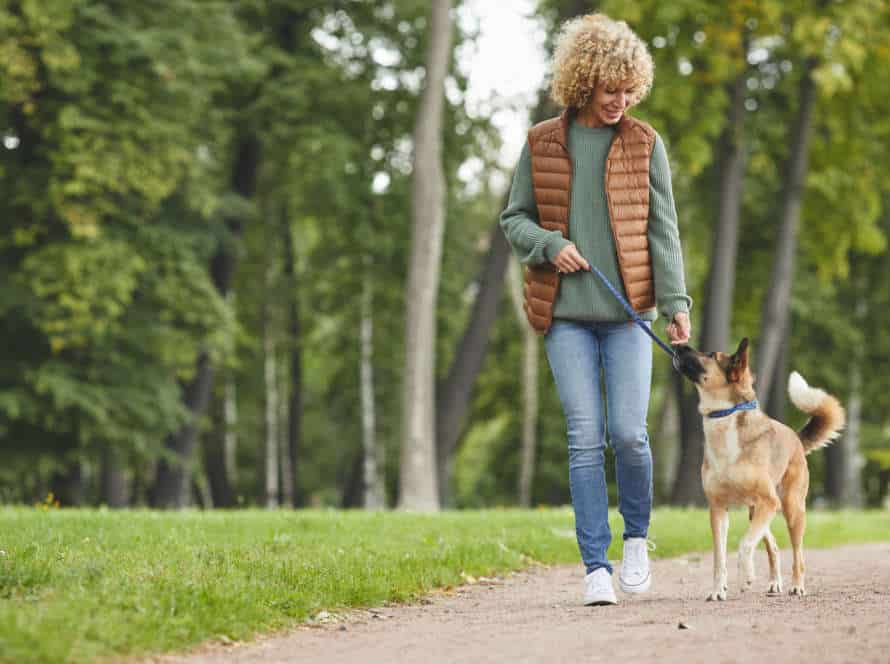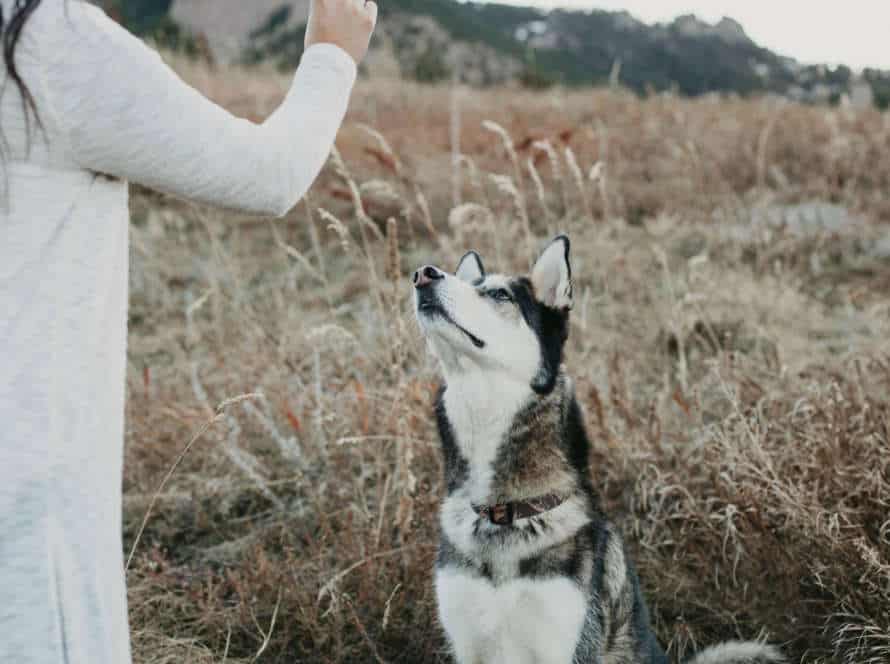Tried and True Positive Reinforcement Techniques for Dog Training
Positive reinforcement techniques can be really useful for training your doggo! Here are some tips to try at home:
- Treats: Give small, easily digestible treats as a reward for their good behaviour. Make sure they’re high in protein and low in fat, so your pup doesn’t get too chubby.
- Verbal Praise: Dogs need positive feedback from their owners. Speak with an enthusiastic, happy tone to show your affection for them.
- Playtime: Reward your pup with playtime and games when they’ve been on their best behaviour. Tug of war and fetch are great interactive games that help build trust.
- Consistency: It’s important to be consistent with your praise and rewards. This helps your pup learn what behaviours are desirable, and also builds a strong bond between you two.
Reward-Based Training Techniques
Positive reinforcement – it’s great for dog training! Reward good behavior and keep calm. This section will explore reward-based techniques and how to use them. Get your pup trained successfully with this approach!
Treat Training
Treat training is a way to shape a dog’s behavior for different purposes. This is done with positive reinforcement and treats. Good behavior is rewarded, leading to quicker learning and retention. Here are tips for using treat training:
- Clicker Training: Use a device that makes a ‘click’ sound when the dog does something right. Treats follow.
- Luring: Use a treat to guide the dog, then reward them.
- Shaping: Reward even small steps towards the desired behavior.
Pro tip: Be consistent. Reward only good behaviors. Avoid rewarding bad behavior, as it can confuse the dog.
Clicker Training
Clicker training is a way to reward good behavior in dogs. It uses a clicking sound to mark what’s desired. This kind of training relies on positive reinforcement.
Here’s how it works:
- Mark the behavior: When the pup does something good like sitting, the owner clicks the clicker. It’s an audible sign that the behavior was correct.
- Reward: After the click, reward the pup with a treat or toy.
- Repeat: Do this consistently until they learn the desired behavior.
Clicker training is effective for teaching obedience, tricks, and addressing problem behaviors like barking and digging.
Pro tip: Keep training short and focused. Know your pet’s learning style and choose a quiet spot with no distractions. Be patient.
Praise Training
Praise training is a way to train dogs using rewards. This technique involves giving verbal praise, petting, and treats when the dog displays the desired behavior. Here are some techniques to use with praise training:
- Clicker Training:
Use a click sound followed by a treat or praise to show the dog which behavior is wanted. - Treat Training:
Treats are a great reward for correct behavior. - Verbal Praise:
Words of approval are a great positive reinforcement. - Progression:
Start with easy commands and build up to more complex ones. Be patient and consistent.
Pro Tip: Reward-based training helps make a strong bond between you and your dog, and makes training more enjoyable.
Positive Reinforcement Techniques for Specific Dog Behaviors
Positive reinforcement is a successful and kind way to motivate dogs to do the desired behaviors. Use positive reinforcement techniques to reward your dog for the behaviors you’d like them to learn and do. Here, we’ll go over different positive reinforcement techniques to teach particular behaviors to dogs.
House training
House training your pup is important. Positive reinforcement works best! Here are a few tips:
- Potty Training: Take your dog out often and reward them with treats and praise when they go outside. Have a consistent routine and use a verbal cue.
- Chewing: Provide chew toys and give treats & praise when they chew on the right object.
- Barking: Teach them to “speak” & “quiet” on command. Reward with treats & praise when they obey.
- Jumping: Ignore them when they jump. Reward only when all four paws are on the ground.
Be consistent with positive reinforcement techniques. House training will be rewarding for both you and your furry friend!
Leash training
Leash training is essential for walking dogs outside or in public. Positive reinforcement is the best way to train your pup. Get to it with these tips:
- Treats – Reward your pup with tiny treats when they obey or walk nicely on the leash.
- Clicker – Use a clicker to signal to your dog when they’ve done something right.
- Consistent Commands – Make sure to use the same words like ‘walk’ and ‘heel’ to help your pup understand what you want.
- Gentle Corrections – Give a light tug on the leash or a change of direction to keep their attention.
- Consistency – Keep it up! Regularly use positive reinforcement when walking your pup to build good habits.
With patience and consistency, leash training can be an enjoyable experience for both of you!
Crate training
Crate training is a positive reinforcement technique to make your dog feel secure and teach them good behavior.
To do this, get a crate that fits them and introduce them slowly. Give treats or praise when they enter the crate. Start with short periods of time and increase over time.
Make the crate inviting by adding soft bedding and toys. Always use positive reinforcement when they display good behavior in the crate.
With consistent positive reinforcement, your dog will view the crate as a safe and happy space. This will result in good behavior at home.
Shaping Behavior with Positive Reinforcement
Positive reinforcement is a great way to train your pup. When they do something you like, reward them with a treat or some praise! This helps strengthen the bond between you and your four-legged friend. Additionally, it can be used in other ways when training dogs.
Identify the behavior you want to teach
Before training your pup, decide which behaviour you’d like to teach them. It’s important to have a clear goal in mind and know the result you want. Here are some tips for using positive reinforcement to shape behaviour:
- Identify the behaviour, such as “stay” or “come“.
- Break it down into small pieces for them to learn quickly.
- Start with the first step and reward when they do it correctly.
- Then, when they’ve got that, move onto the next step and reward them again.
The aim is to get the desired outcome, while giving rewards for each part. Pro tip – Be consistent, patient and positive throughout.
Break it down into achievable steps
Training your pooch needs patience, consistency and positive reinforcement. Breaking it down into doable parts let you teach your dog new habits effectively. Follow these steps to shape behavior with positive reinforcement:
- Name the behavior you want your pet to learn and split it into small, achievable goals.
- Utilize positive reinforcement to prize your dog for doing the required behavior. Reward-based training sets up a positive association for your pup with the behavior and motivates repetition.
- Keep the same approach, and make lessons brief and frequent. Short training helps attention and minimizes disappointment.
- If your pup does not want to do the desired behavior, switch their attention and reward them when they do the needed behavior instead.
- Training is crucial. With repetition and consistency, your furry pal will master the new behavior until it becomes second nature.
By breaking down behavior shaping into straightforward steps, you can teach your pup successfully and have a positive training experience for both you and your dog.
Reinforce each successful step with treats, praise, or both
Positive reinforcement is a great way to train dogs. It involves giving treats, praise, or both when they do something right. Here are some successful techniques:
- Clicker Training: Use a clicker to make a sound when your pup does something right. After that, give them a treat or use verbal commands to praise them.
- Treats: Dogs love food, so give small, bite-sized treats as rewards.
- Verbal Praise: Speak in a happy tone and say “good boy/girl” to praise them.
- Toys: Give toys as rewards for good behavior, as they enjoy playtime.
Remember: Be consistent with positive reinforcement. Reward their successful behavior every time. A pro tip: Use healthy treats instead of unhealthy ones to promote their wellbeing.
Avoiding Common Positive Reinforcement Mistakes
Positive reinforcement is vital to successful dog training. Do it right and your pup will learn desired behaviors quickly! But, if not careful, common mistakes can lead to frustration. Let’s look at what those mistakes are and how to dodge them.
Failing to reward your dog at the right time
Reinforcing your pup at the right time is really important for successful dog training. Not doing so may lead to inadequate training and even bad behaviour. Here are some common positive reinforcement blunders to avoid:
- Delayed Timing: If you hold off too long to reward your canine, it may not comprehend what behaviour you’re rewarding and may become perplexed.
- Inconsistent Timing: It’s essential to be consistent when training your pup. If you give rewards for the same behaviour at different times, your pup may not learn the preferred behaviour.
- Incorrect Treats: Providing your pooch with unsuitable rewards or high-level rewards too early can make it too reliant on rewards and less likely to obey commands without them.
- Not Varying Rewards: Dogs love variety, and without varying rewards, the instruction can become boring and fruitless. Make sure to use different types of rewards to keep your pup engaged and motivated.
Giving up too soon
Quitting too early is a common mistake people make when training their pooches. Positive reinforcement is a powerful technique that involves rewarding good behaviour, and it needs consistency and patience. Here are some techniques to help avoid quitting early:
- Start with basic behaviours and steadily increase difficulty.
- Use delectable treats and lots of pats for good behaviour.
- Keep training sessions quick and consistent.
- Stay patient and consistent with reinforcement.
By following these techniques, you can train your pup effectively and avoid giving up. Positive reinforcement needs time and patience, but with the correct approach, it can be an exceptional tool for creating a strong bond with your furry friend.
Using punishment to correct unwanted behaviors
Punishing a dog for unwanted behavior destroys the trust and bond between them and their owner. Instead, positive reinforcement can be a more effective way to modify behavior. Here are a few tips:
- Treat Training: Reward obedience with treats, toys, or attention.
- Clicker Training: Use a clicker to mark desired behavior, and then reward it.
- Positive Association: Teach the dog to connect actions with positive outcomes.
Behavior modification requires patience, consistency, and positive reinforcement.
Positive Reinforcement Techniques for Specific Situations
Positive reinforcement is great for training dogs. Reward them when they do something you desire. This method works well in various situations. Let’s look at some techniques that work for specific circumstances.
Separation anxiety
Separation anxiety is a common problem for dogs. It makes them anxious, stressed and destructive. Positive reinforcement training can help them. Here’s how:
- Crate training – give treats & praise when introducing a crate.
- Desensitization – increase time alone slowly & reward with treats, toys & praise.
- Stay calm – when leaving & coming home, be neutral and calm.
- Interactive Toys – provide puzzle feeders etc. to keep them occupied.
Positive reinforcement techniques can help reduce anxiety and make dogs feel more confident when left alone.
Fear of loud noises
Many dogs fear loud noises, such as thunder, fireworks, or gunshots. To help them cope better, positive reinforcement techniques can be used. Here are 3:
- Counterconditioning: Show the sound at low volume and link it to something pleasant, like a treat or game. Increase the volume over time until the dog is no longer afraid.
- Distraction: When you know a loud noise is coming, like a thunderstorm, distract your dog with a toy, treat, or game.
- Calming signals: Massage or T-Touch therapy might help a dog relax during a loud noise.
Training takes patience, but with consistency, these techniques can help dogs overcome their fear of loud noises and feel more secure.
Fear of other dogs or people
Managing fear of other dogs or people is often a challenge for dog owners. Positive reinforcement techniques are a great way to conquer this fear.
Let’s explore 3 of the most effective ones:
- Counter-conditioning: Teach your dog to link something they like – like a treat or toy – with being around other dogs or people. Gradually increase exposure & reward good behavior.
- Desensitization: Getting used to fearful events in a controlled environment can reduce anxiety. Start far away, reward good behavior, and slowly reduce distance.
- Clicker training: Use a clicker and treats to reward good behavior. The clicker signals your dog that they’ve done something great and a reward is coming.
Progress must be steady and gradual when dealing with fear. Patience is key! Pro tip: Get help from an expert if fear persists.
Frequently Asked Questions
Q: What is positive reinforcement in dog training?
A: Positive reinforcement is a training method that involves rewarding desirable behavior in dogs with treats, toys, and praise.
Q: Does positive reinforcement work for all types of dogs?
A: Yes, positive reinforcement techniques can be effective for dogs of all ages, sizes, and breeds.
Q: How can I use positive reinforcement to train my dog?
A: You can use positive reinforcement by rewarding your dog immediately after they display a desired behavior. Rewards can include treats, affection, praise, or playtime with a favorite toy.
Q: What are some examples of positive reinforcement techniques in dog training?
A: Examples of positive reinforcement techniques include clicker training, giving treats, verbal praise, and using toys.
Q: Can positive reinforcement be used to eliminate unwanted behaviors in dogs?
A: Yes, positive reinforcement can be used to successfully eliminate unwanted behaviors in dogs by rewarding desirable behavior instead.
Q: How long does it take for positive reinforcement to work in dog training?
A: Positive reinforcement can work quickly, but it may take several training sessions to develop good habits and behaviors in your dog.

